“What is it with America? How come a nation that has the technological ability to fly a man to the moon, walk around on it, turn around and fly back to earth using a heat shield capable of withstanding the incredible furnace of re-entry, can’t lay tarmac that can cope with normal daily temperatures and has massive cracks in it every few feet?”
It was hard to disagree with Terry’s sentiments. It had been an exhausting day of cycling – 77 miles and much of it on a dreadful road surface with a shoulder so poor we were forced to ride on the main carriageway and jostle with fast moving traffic all afternoon. We got used to the sound of long blasts on car horns trailing off into the distance. Pick-up trucks and semis are never quiet, but when they are roaring past just a few feet from your ears they are deafening.
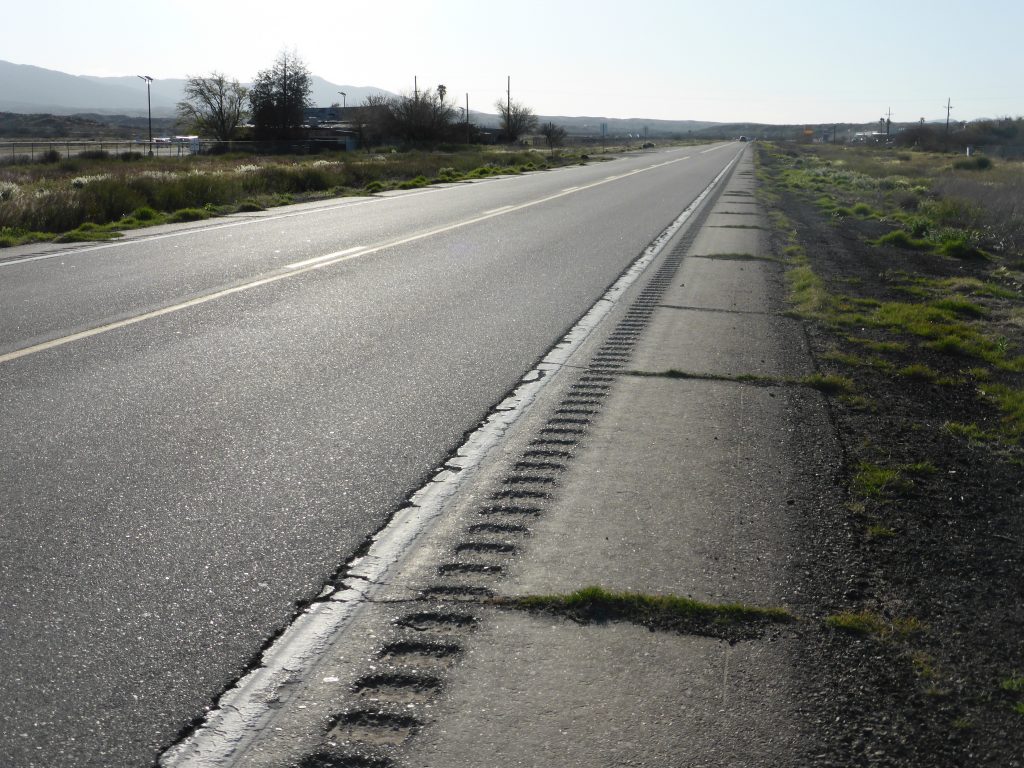
Pulling into Globe this evening I felt pretty much beat. As I rounded the final bend of the day I could see Terry waiting on the opposite carriageway. Spotting me, he rolled across the road on his bike and pulled up alongside. The look we gave each other said it all. Despite spectacular views of the mountains and swathes of flowers in blues, yellows, oranges and purples cloaking the roadsides, the 70 from Safford to Globe had taken its toll.
“Terry remarked that it wasn’t the usual reponse he gets when he shows people his padded knickers”.
Without saying a word Terry pointed to the rack on the back of his bike where his cycling shorts, which had been washed earlier and were now bone dry, were tied on with bungees. He gently lifted a piece of material and nestling on the fabric was something so wonderful my eyes instantly lit up. I could have kissed him. Terry remarked that it wasn’t the usual reponse he gets when he shows people his padded knickers. It was a Snickers Bar.
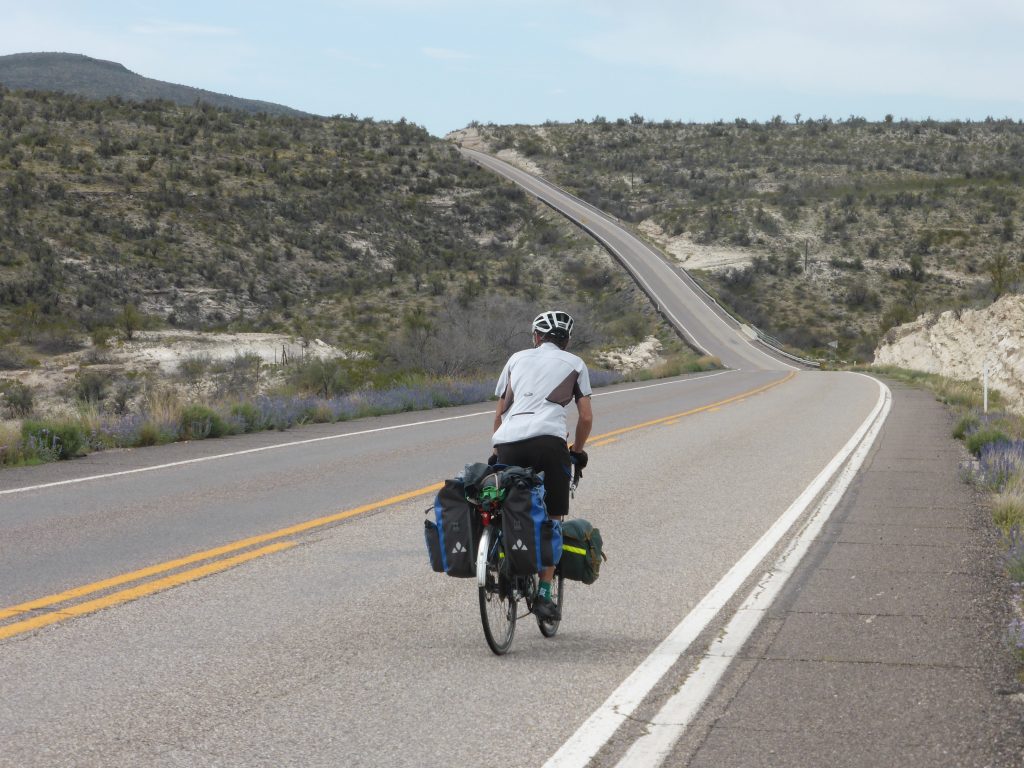
I should have known it was going to be a difficult day the moment I woke up on the sofa at the Sunrise RV site. I was so tired after yesterday’s ride I started dropping off to sleep while writing my diary and my head was starting to swim. By the time I woke up it was a full blown headache. My phone must have known something was up as it switched itself off during the night, so I awoke late and confused.
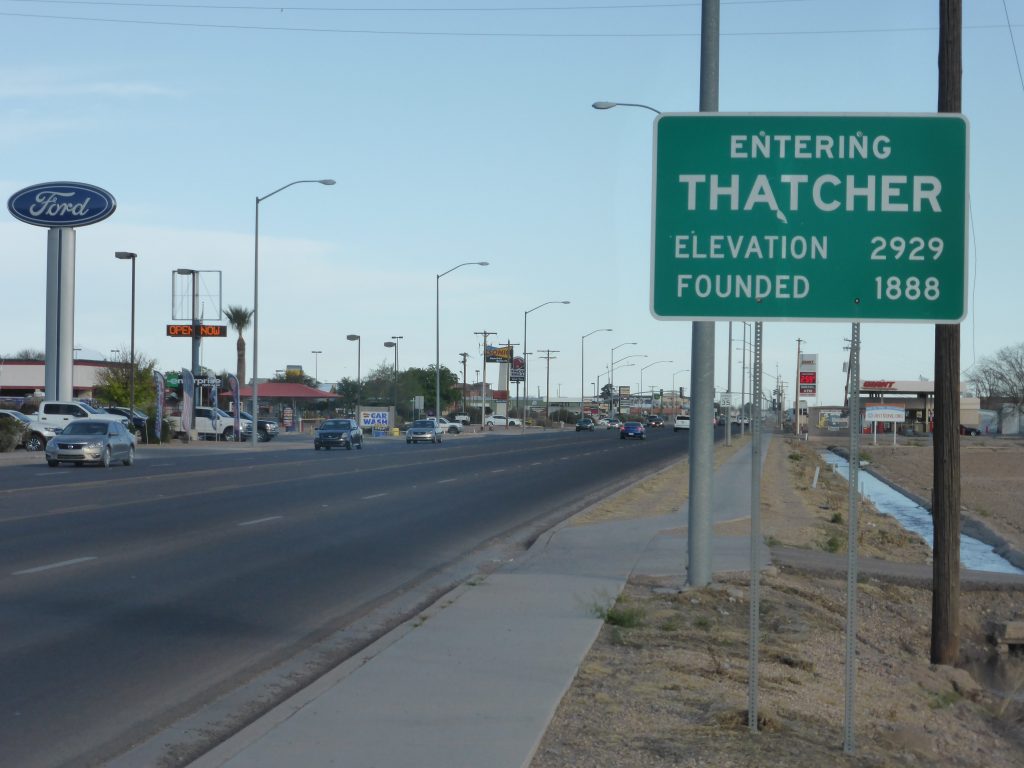
One thing kept me going – Denny’s, probably my favourite US restaurant after Schlotzsky’s – was just three miles down the road, although it was in a town ominously called ‘Thatcher’ but I was willing to forgive it that.
The ride there along the Gila River Valley also gave us an opportunity to look a little closer at Safford, which appeared to consist of the usual endless line of retail interspersed with car and truck lots and manicured irrigated fields being prepared for cotton and alfalfa. It also boasts two prisons and a copper mine.
Google maps led the way to breakfast and we trawled down the 70 to the delights of hash browns, toast and sausage and a veggie skillet for Terry.
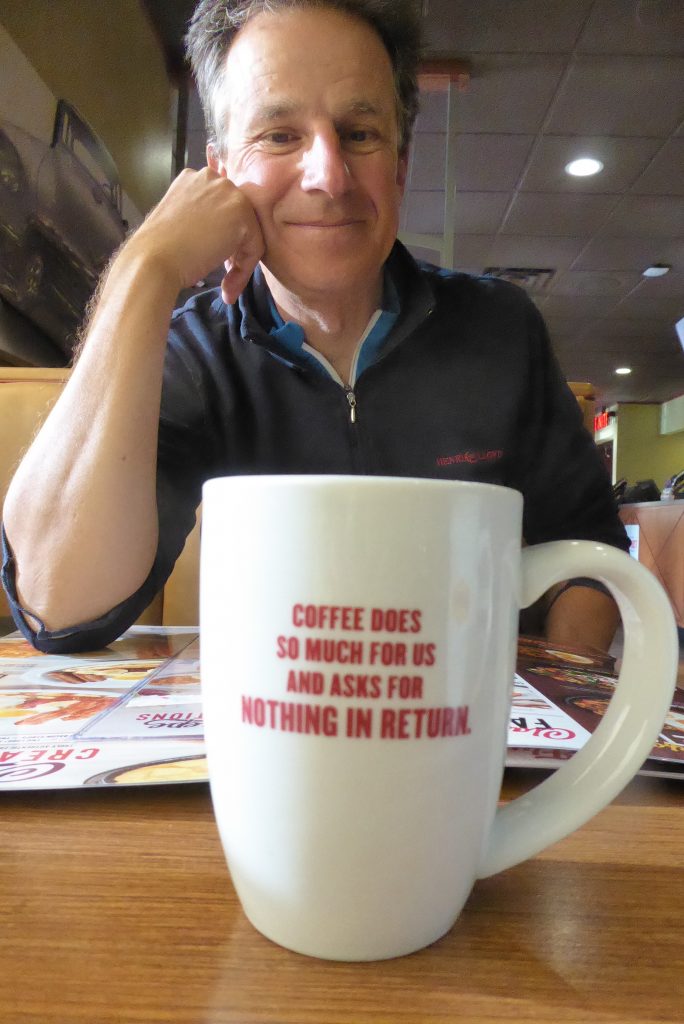
There’s something about Denny’s that feels just right to me, I’m not sure if it’s the comfy booths, the old historic photos showing the origins of the chain, the constant pouring of coffee or the unpretentious menu, but for me it just hits the spot.
Thatcher itself was originally settled in 1881 by members of The Church of Jesus Christ of Latter-day Saints, also known as the Mormon Church and there’s a hugely impressive and imposing temple beside the 70 between Thatcher and Pima.
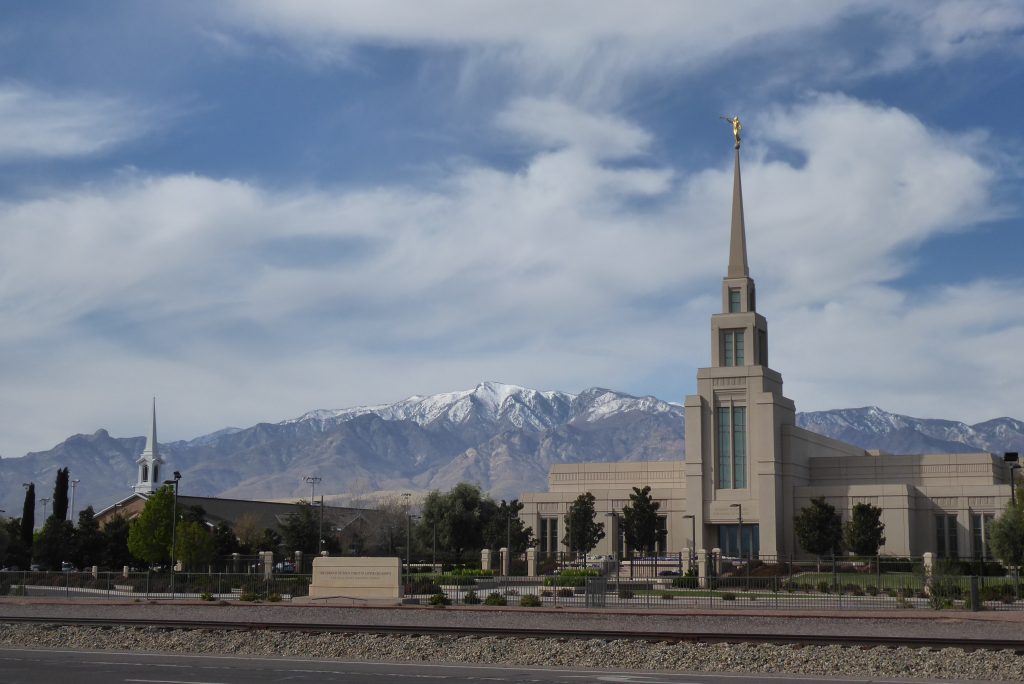
Even more impressive were views of the snow-capped Mount Graham, part of the Pinaleno Mountains and at 10,724ft the highest in Arizona. It is considered scared by the Apache, who were not impressed with the decision to build an observatory on the peak. Their opposition is shared by environmental groups trying to save the Mount Graham Red Squirrel.
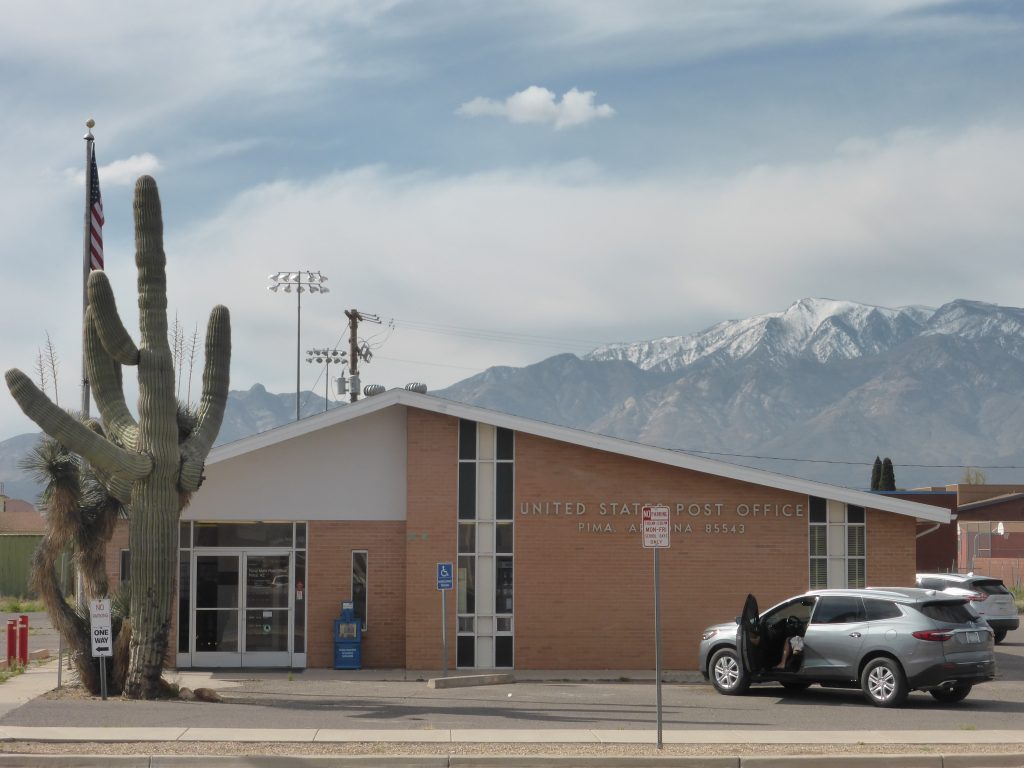
Fueled by breakfast and an easterly on our backs we tanked on for 30 or so miles, the road broadly following the Gila river. Pima promised both a cinema and car museum, but sadly both looked long closed.
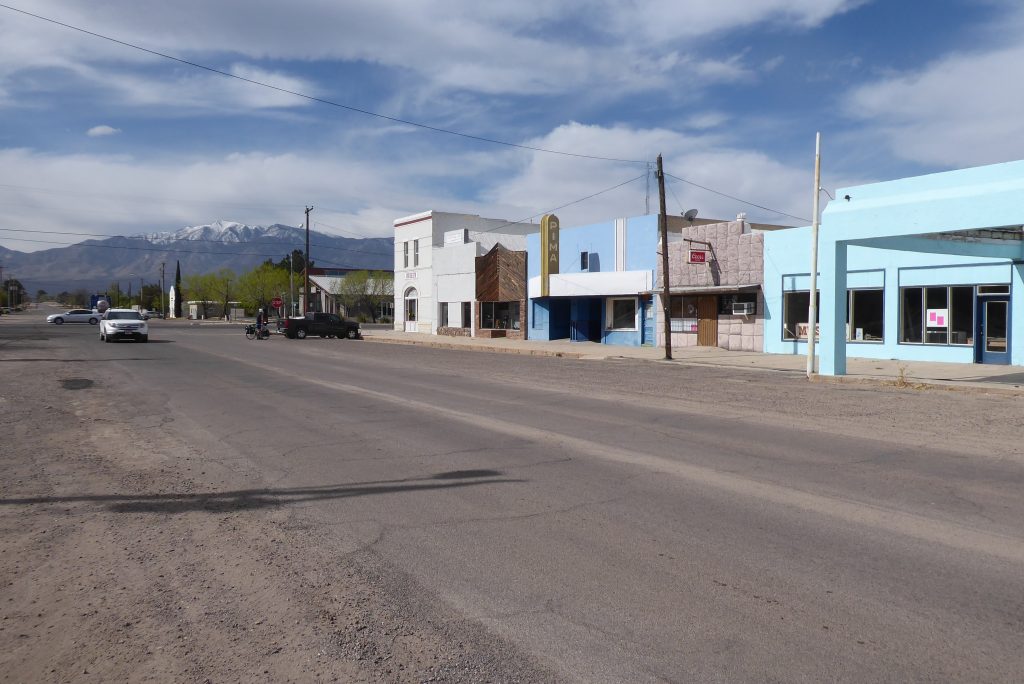
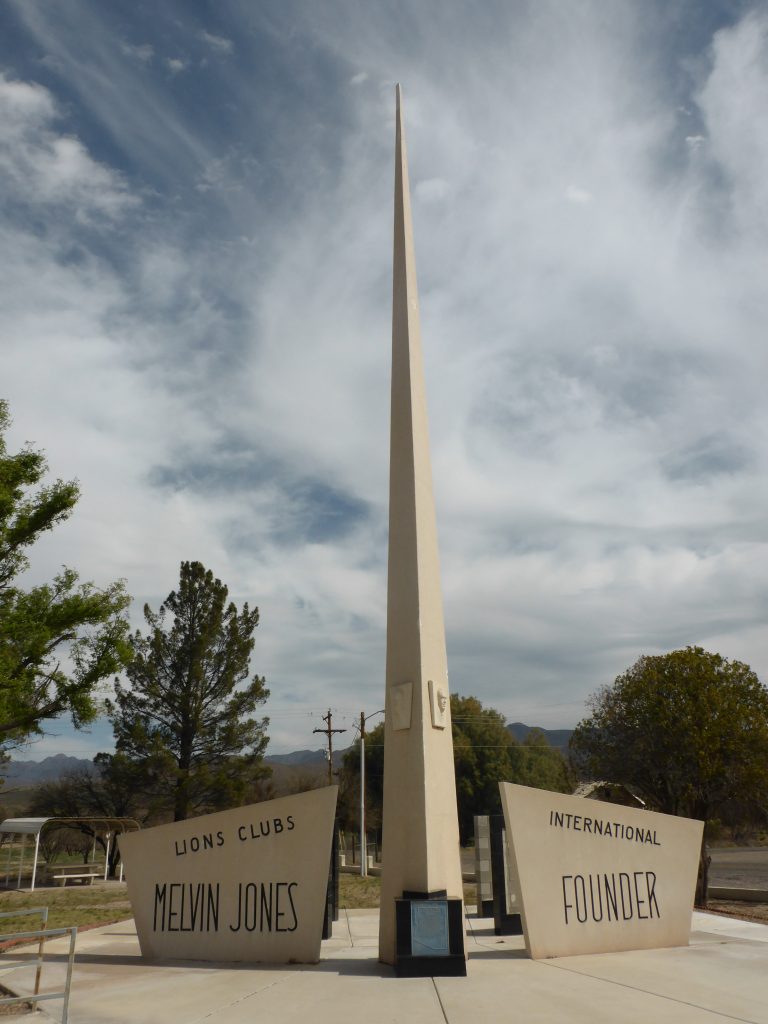
At Fort Thomas, a strange needle like monument piercing its way skywards celebrated the birthplace of Melvin Jones, one of the founders of the Lions Club, which was formed in Chicago in 1917.
What I found most remarkable was the incredible span of history during his lifetime. Born in 1879 he spent his first eight years in Fort Thomas, at a time when the country was still fighting the Indian Wars. Just a year after he died, in 1961, President Kennedy announced the United States were going to put a man on the moon by the end of the decade.
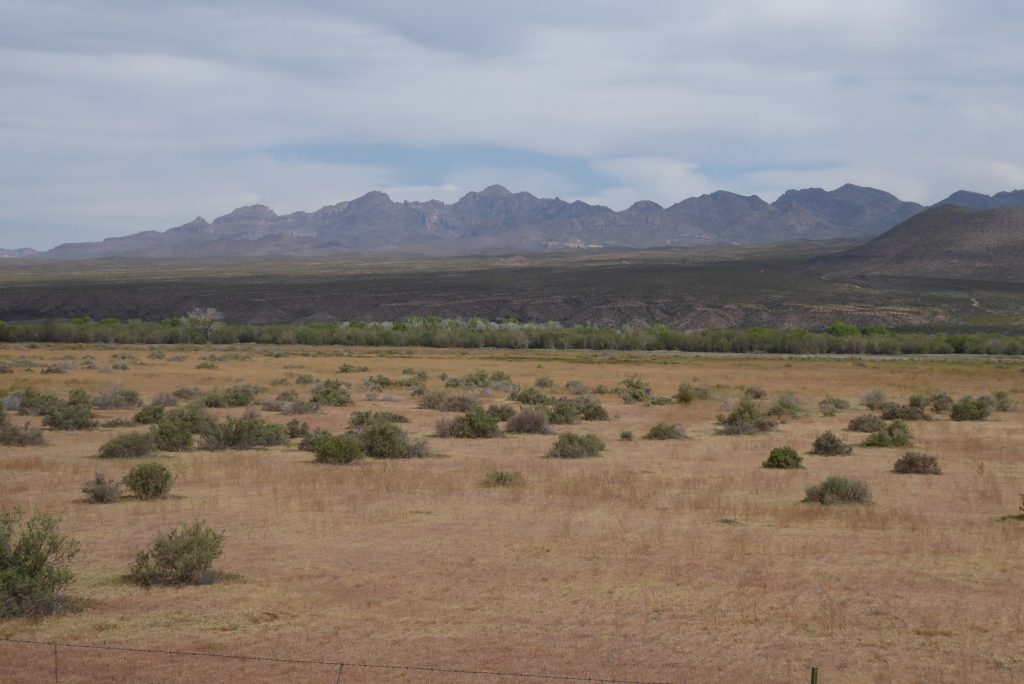
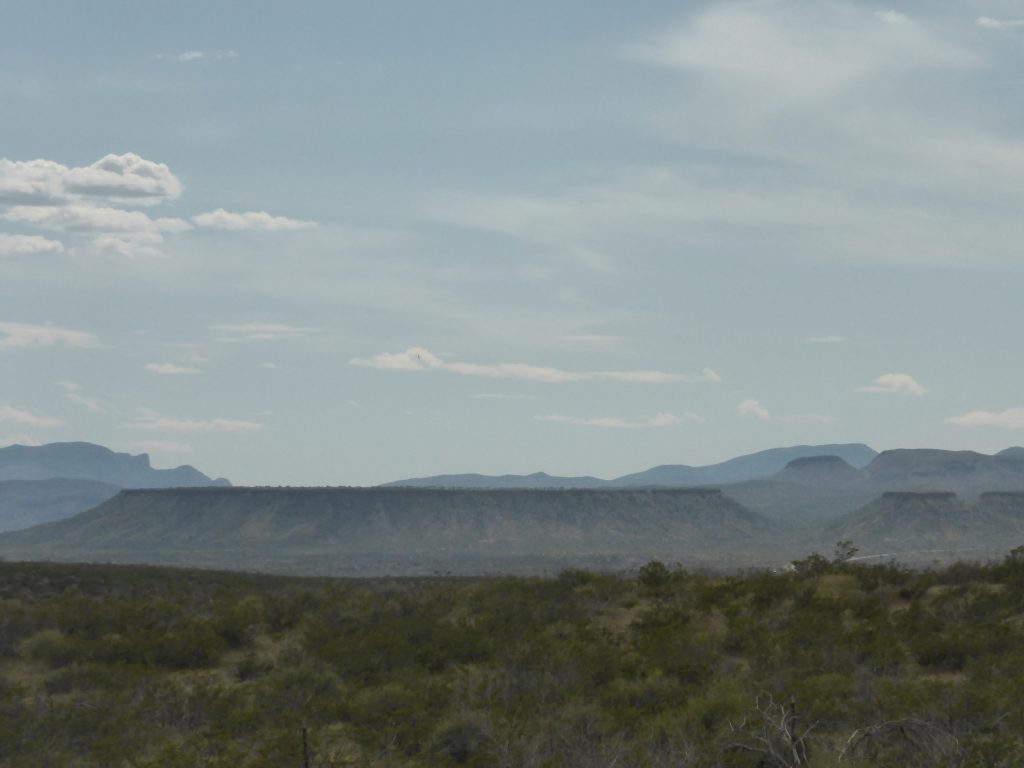
About five miles out of Fort Thomas, we passed through Geronimo, which we assumed was named after the Indian Chief and then we entered the San Carlos Apache Reservation, one of seven Apache Indian Reservations established by the United States in the late 1880’s and covering 1,600,000 acres of desert, pasture and mountain.
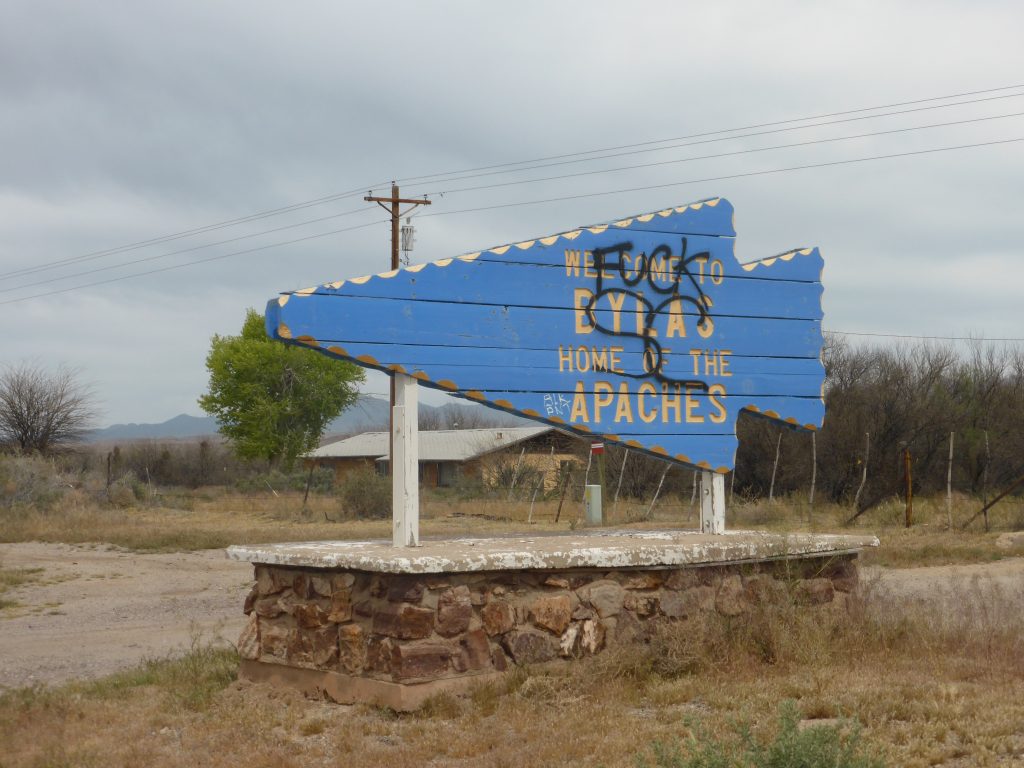
It made me angry and sad to see that the welcome sign to Bylas ‘Home of the Apaches’ had been defaced with a profanity. If I’d have had some paint with me I’d have stopped and removed it.
They say history is written by the victor and that certainly seems the case in much of the US. Historical plaques marking the undoubted bravery of the early settlers abound, but very little is said about the Native Americans who were trying to protect their land and complete way of life against an unstoppable flood of immigration, each new settler keen to get a slice of the promised land.
“There would be no more freedom on the plains, no hideout in the mountains that would keep them safe”.
The truth is that as soon as the first Europeans arrived in what is now the modern day United States, the writing was on the wall for the indigenous peoples. The Apache, despite their bravery and skill at battling a far superiora and numerous enemy, would be brushed aside like the scores of tribes that had fallen and succumbed before them.
There would be no more freedom on the plains, no hideout in the mountains that would keep them safe. A century and a half on from the Indian Wars they still have the look of a defeated nation.
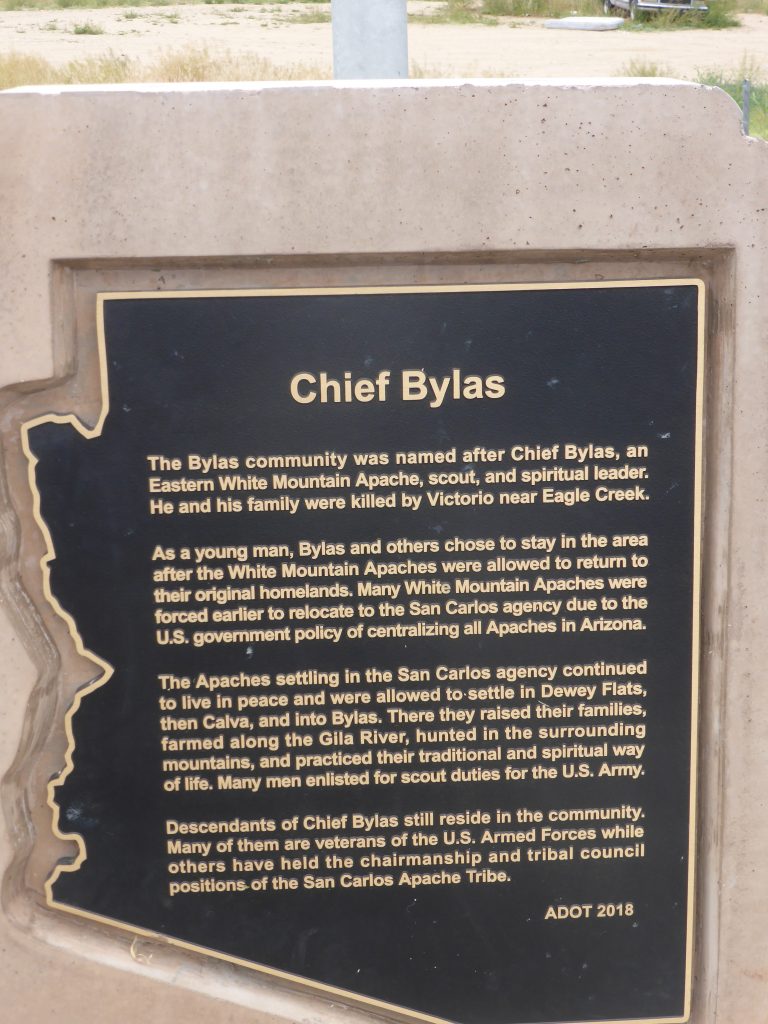
Bylas was named after Chief Bylas, an East White Mountain Apache. He and his family were killed near Eagle Creek by Victorio, the Apache chief who had fought such an intensive war against settlers around Hillsboro, New Mexico. According to an historical plaque, descendants of the chief still live in the community.
If you were unaware you would initially have no idea you were passing through anything other than another, rather poor, US town. We’ve been brought up to think of the Apache wearing colourful head dresses, riding horses and living in tepees, but of course that’s as realistic as believing that everyone in the UK lives in a castle and wears armour to pop down to the shops.
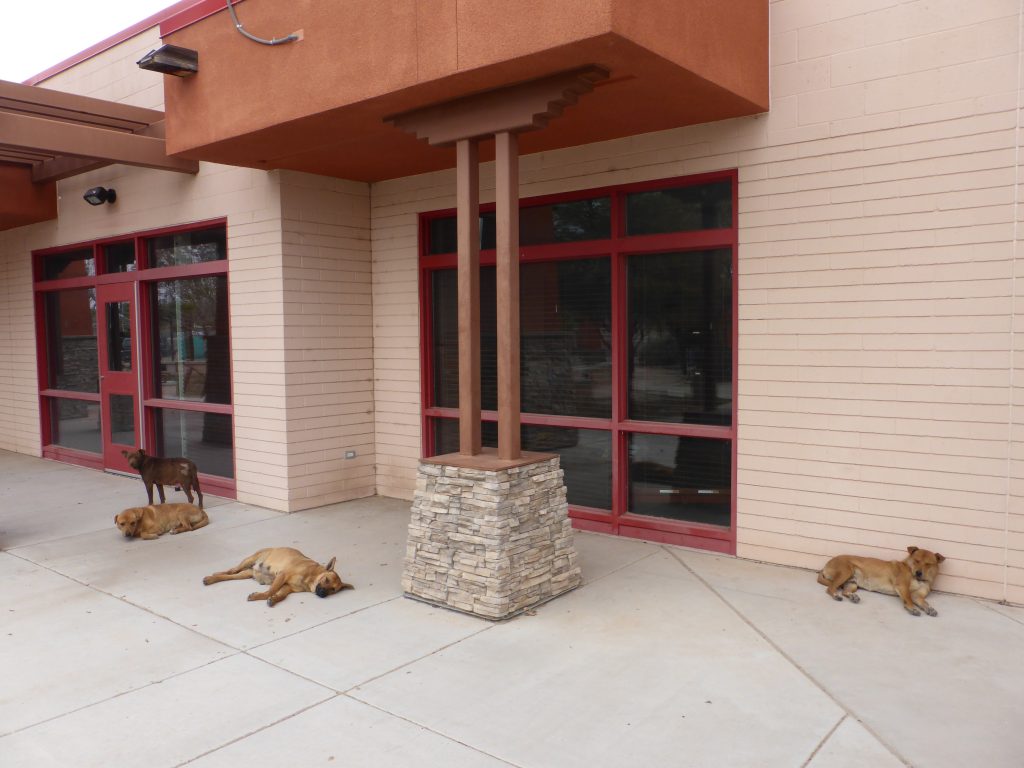
We passed a museum that appeared closed but other than that there was little in the reservation promoting the tribe’s heritage other than a few artefacts in a service station we stopped at in Peridot. It looked like some money had been spent on a big community building in Bylas, but most of the offices were closed bar the Apache Baptist Academy. A notice in one of the closed offices announced the ‘Miss Indian Fort Thomas Pageant’ and called for participants with good grades. Outside a group of stray dogs lay about, but seemed uninterested in the bikes.
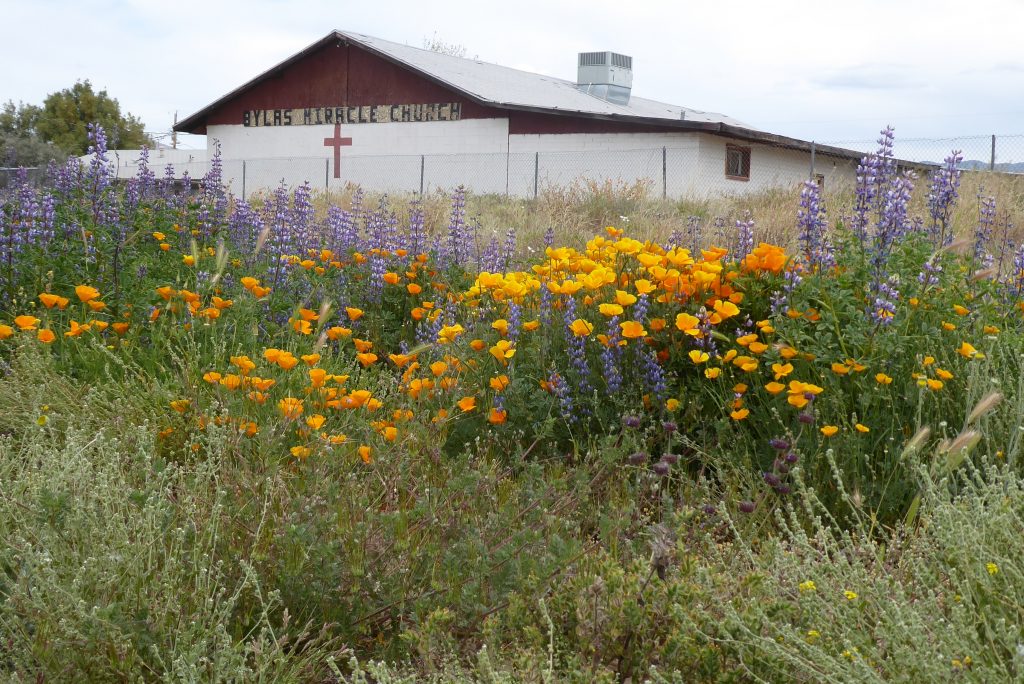
Of the Apache we saw nearly all were overweight, but with the lack of healthy food available it was hardly surprising. Of the two stores we visited in the reservation neither had any fresh vegetables or fruit. It seems anyone in the reservation who wants these has to drive to Globe.
“Huge buckets of fizzy pop seemed particularly popular”.
All you seemed able to buy locally was cheap convenience goods, crisps and a multitude of ice cream. Huge buckets of fizzy pop seemed particularly popular. Only the children appeared to be of normal weight, although that’s probably only because they were running around and burning off the calories.
It’s a familiar sight we’ve seen across the South and in parts of Kentucky and Kansas on the TransAm, but somehow it seemed a little bit worse here. Ours was only a snapshot view, but it appeared to be a rather sad fate for such a proud nation with such a rich heritage.
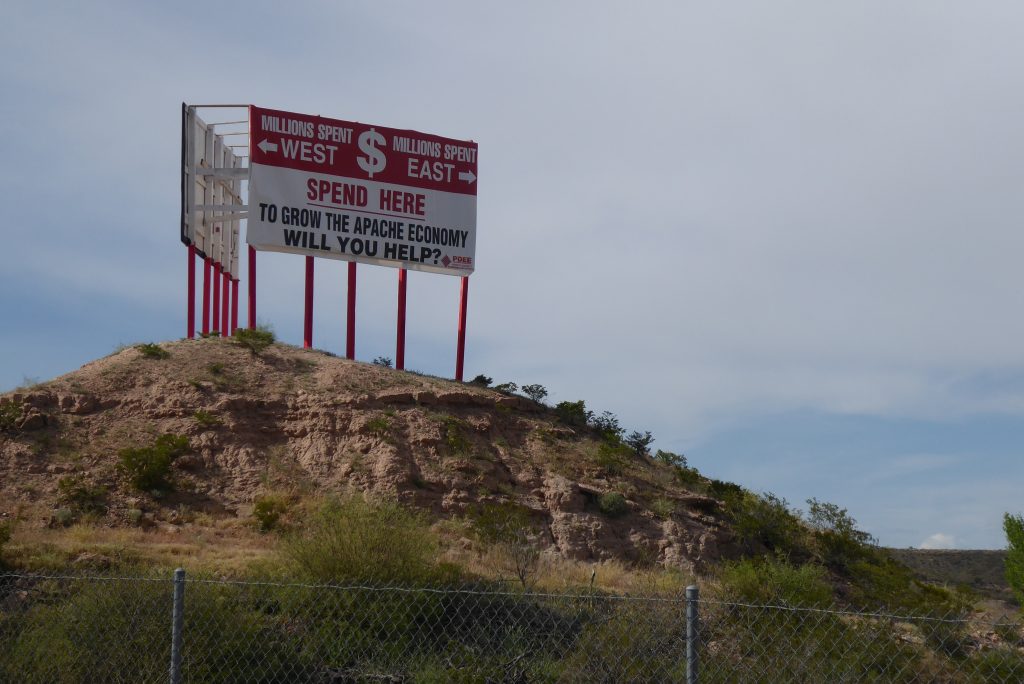
As a few drops of rain began falling (we couldn’t remember the last time it had rained!) we pulled into a store in Peridot and got chatting to an old man with a wonderfully characterful face who was using a walking frame.
He came from another reservation and called himself Brown Cow, although he also said his name was David. A local youngster drove up in their pick up, got out, gave him a fist bump and addressed him with the name – Brown Cow.
“Had he grappled with a Brown Cow? Ridden one in a rodeo”?
We were curious – how had he got the name? Our imagination went into overdrive. We were expecting – and hoping for – an exciting tale of derring-do and convoluted family history going back generations. Had he grappled with a Brown Cow? Ridden one in a rodeo? Caught a wild one out in the desert, slaughtered it and fed his family for a year?
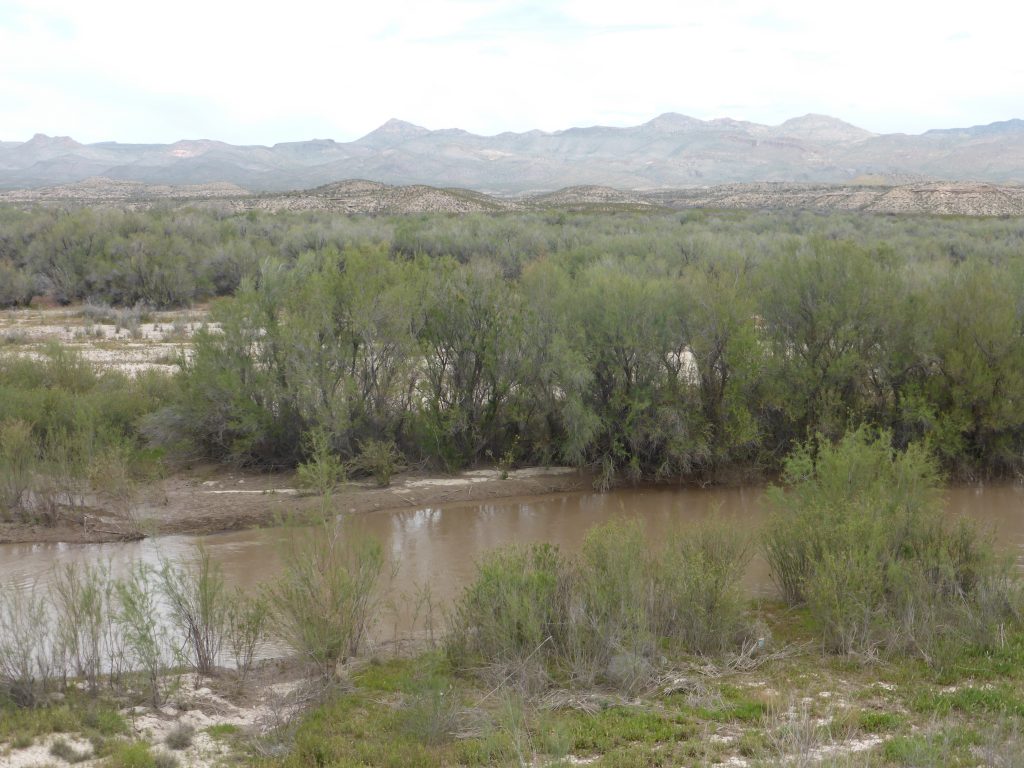
Turns out the truth was far more prosaic – he’d simply been kicked in the leg by a brown cow when he was younger. He was using the walking frame as he’d recently broken his other leg – caused he said by his friend getting wasted and falling over him.
It’s a good job he’d already got the moniker Brown Cow. It might not be Sitting Bull or Crazy Horse but it’s far better than Wasted Mate.
He told us about the casino further up the road, run by the community, where the profits go back into the local area and are not taken by the government. We’re not sure whether that’s a positive piece of federal/state/county legislation or just a reservation loophole.
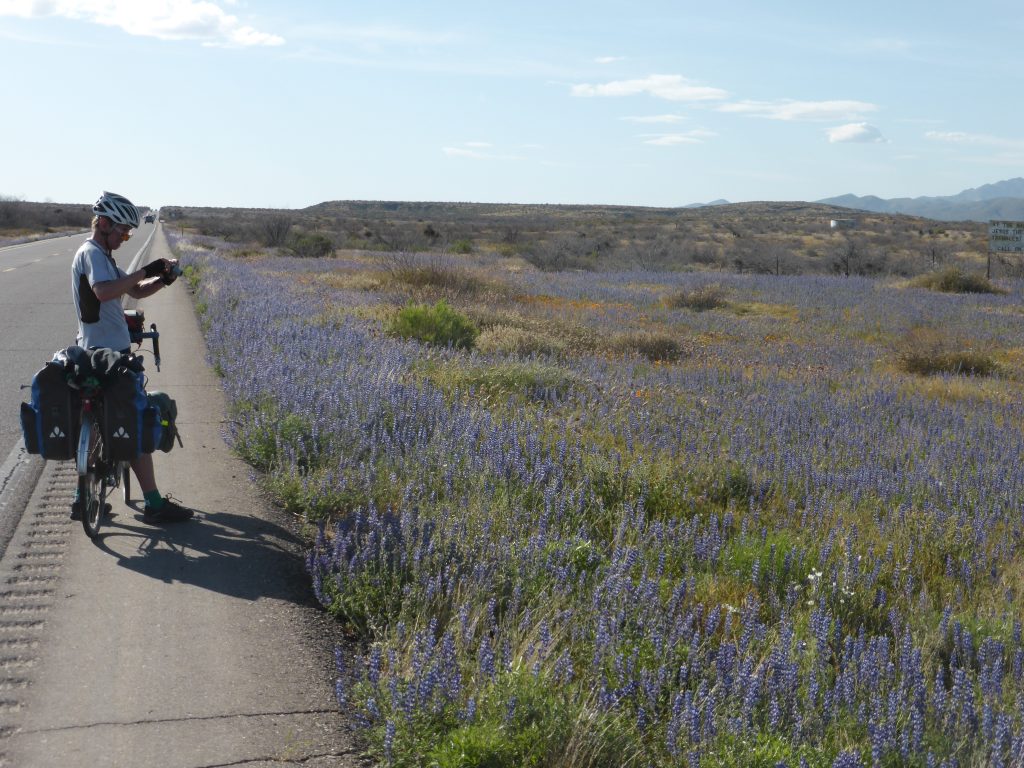
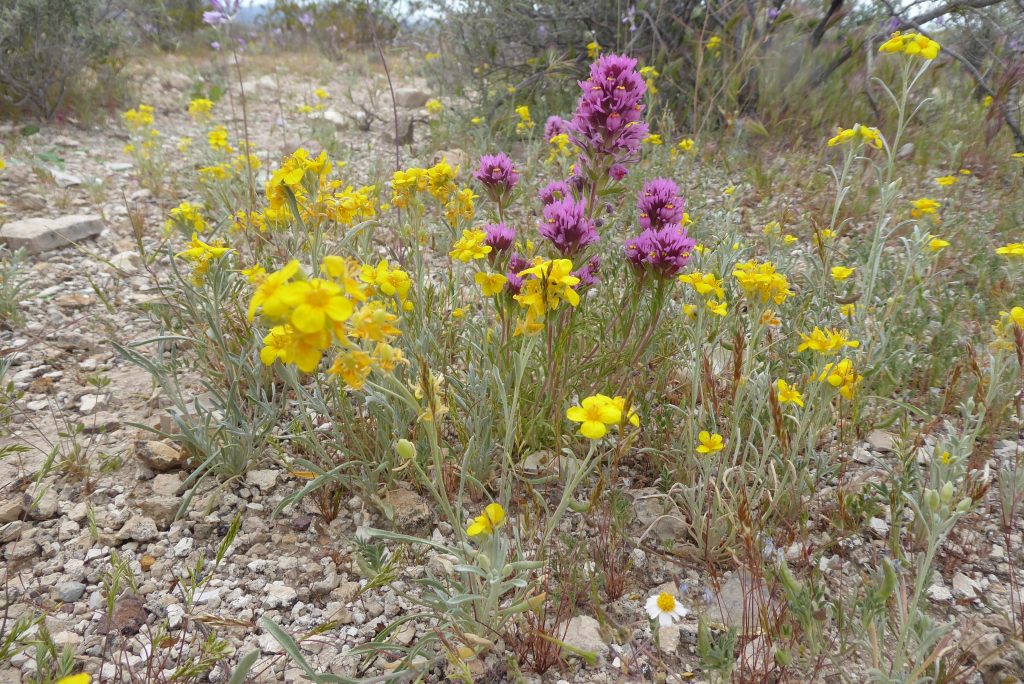
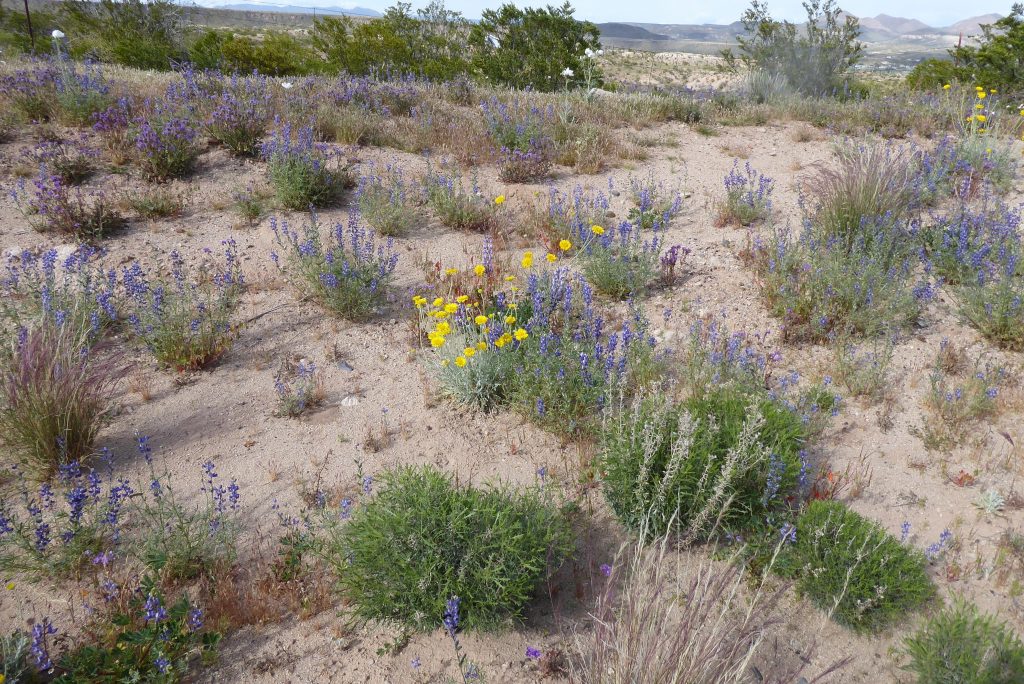
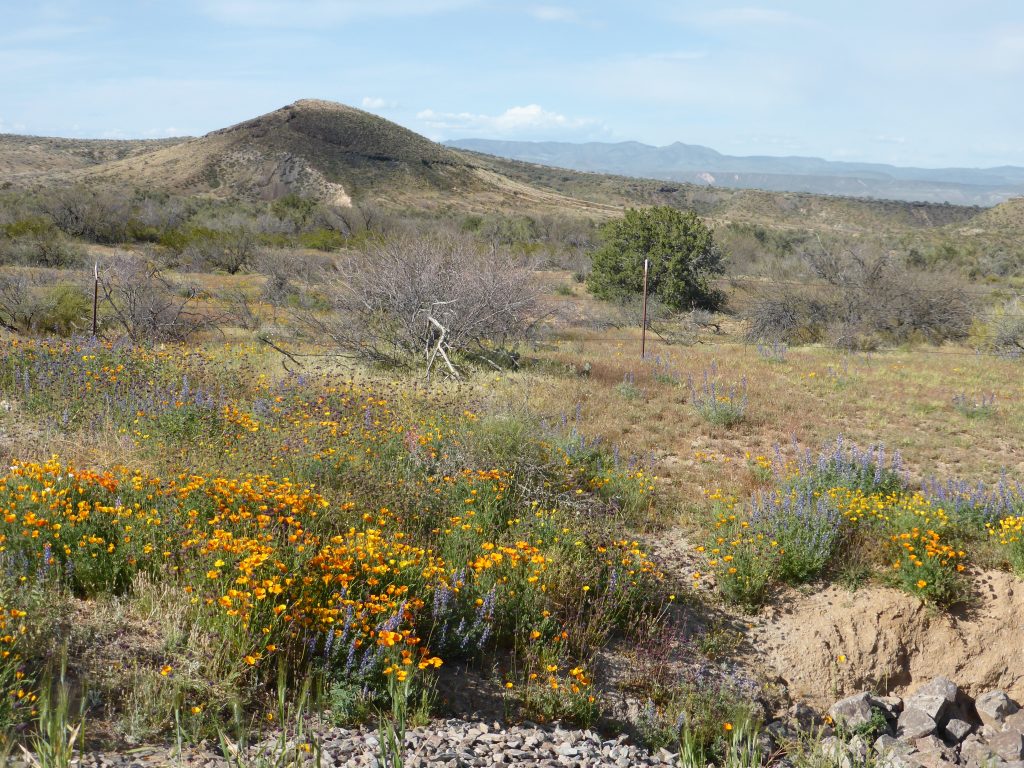
On a much more superficial and brighter side, the small wayside spring flowers were a delight of yellows, white, reds and blues as they spread across the near white ‘soil’, drawing the eye towards the low mountain ranges, tens of miles away. The bluebonnets here were leggier than the ones we’d seen in Texas and looked much more like small lupins.
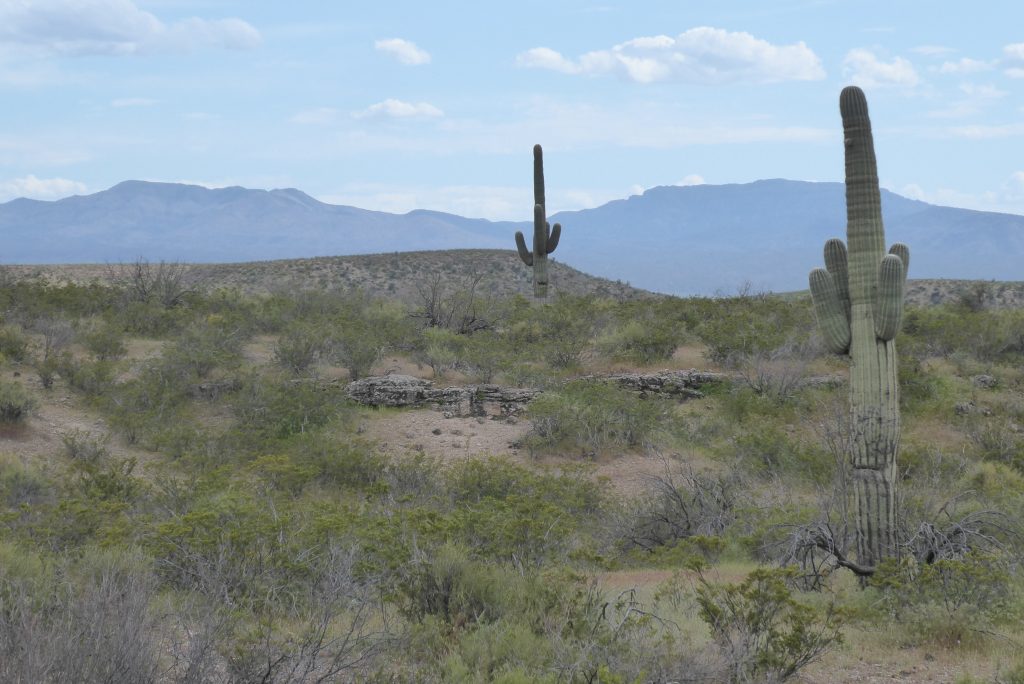
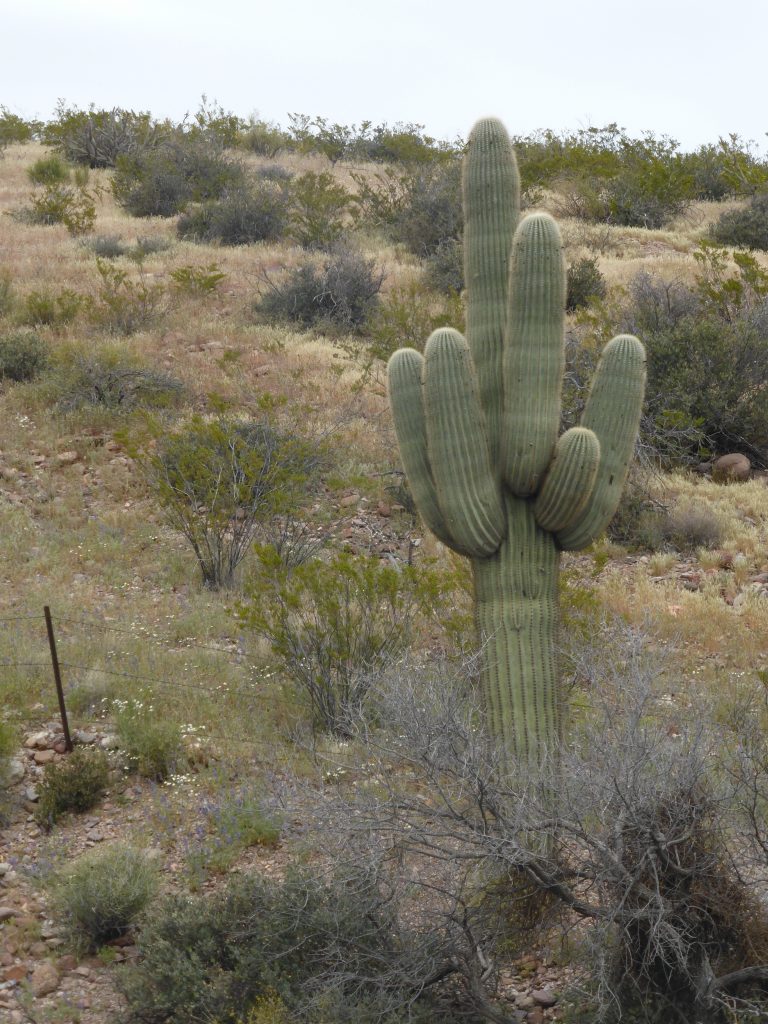
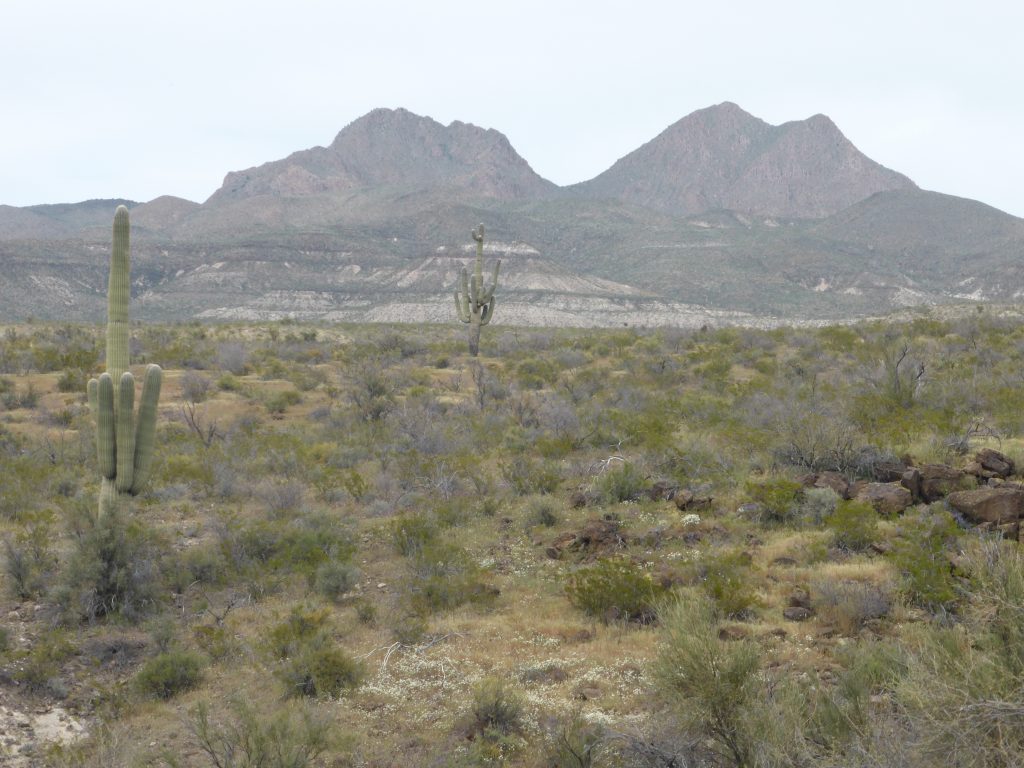
The characteristic tall saguaro cactus also started to appear as the terrain became drier and more hilly. These incredible plants can grow to be more 40ft tall and are native to the Sonoran Desert as well as the Mexican state of Sonoro and areas of California . We were now travelling through the Arizona Upland which is the northeastern section of the massive desert which covers approximately 100,000 square miles.
“Damaging or vandalising a saguaro, which includes shooting them, is illegal in Arizona”.
The saguaro can live longer than 150 years and may grow their first die arm anytime from 75 to 100 years of age. The blossom of the saguaro is the state wildflower of Arizona.
Damaging or vandalising a saguaro, which includes shooting them, is illegal in Arizona and can land you in the slammer. Although why you’d want to damage such a majestic work of nature beats me.
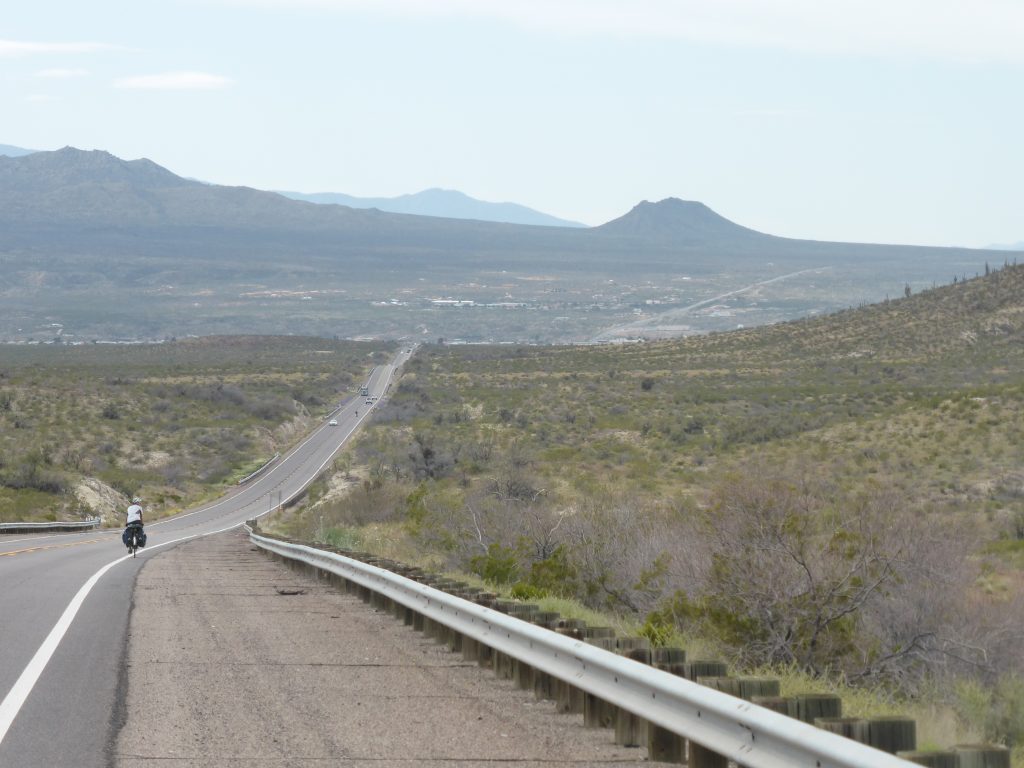
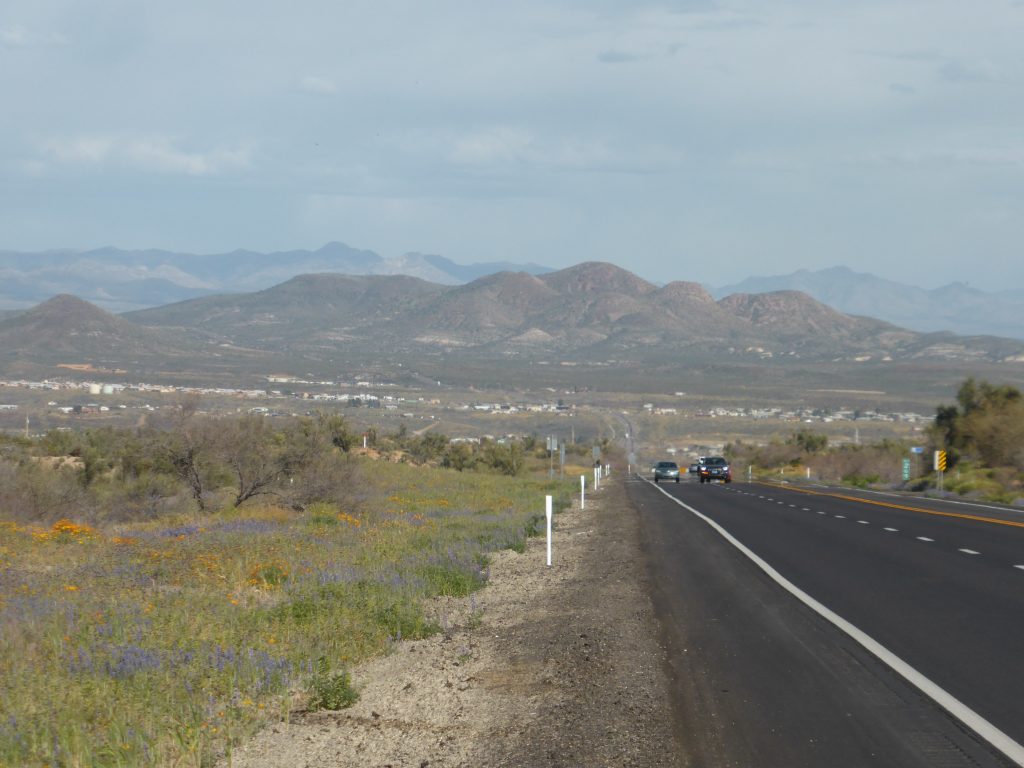
The relatively new road … in geological terms … cut straight through the low hills and over deep canyons, giving wonderful views of water and time in action. The Grand Canyon they may not be, but Terry was impressed. I, on the other hand, found myself getting more and more frustrated and angry at the state of the road.
The poor conditions often meant we had no choice but to ride down the very narrow gap between the white line and the rumble strip. After mile upon mile of being stuck in this no man’s land I finally lost the plot and started punching one of my panniers in frustration.
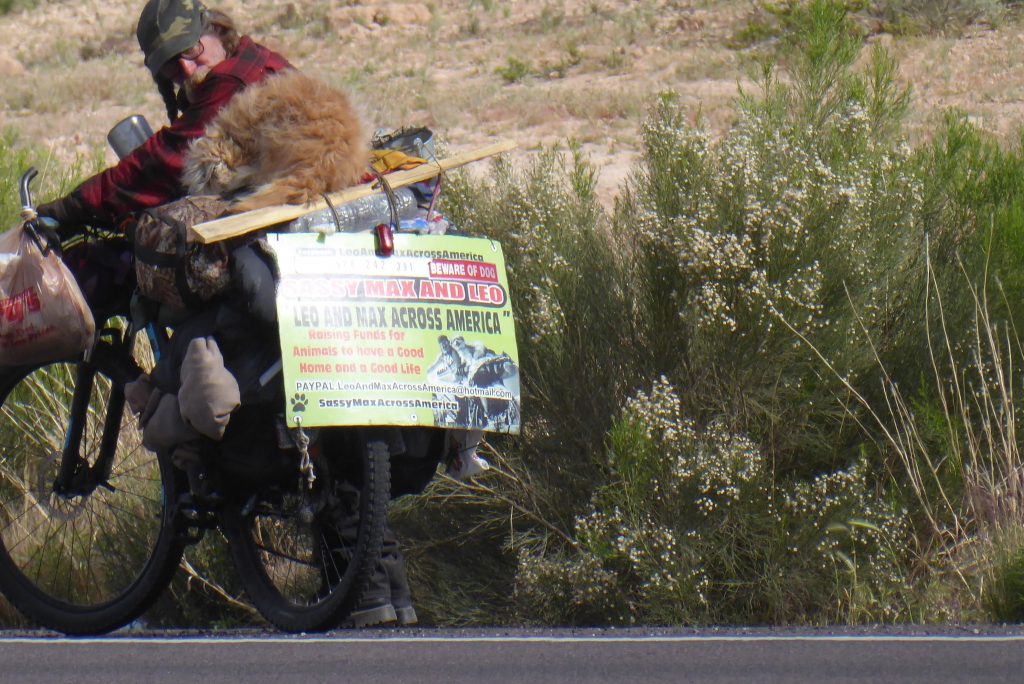
How could anyone describe this as a suitable route for cycles? It was a real shame as it spoilt my enjoyment of what had been a fabulous ride, but the 70 had been bringing back memories of our awful experience on the 90 in Florida and the thundering noise of close traffic had finally gotten to me. Terry thought I was joking about being angry, but in truth I momentarily lost it. One totalled Tupperware dish later, we were soon chatting happily about the swathes of flowers and cacti around us.
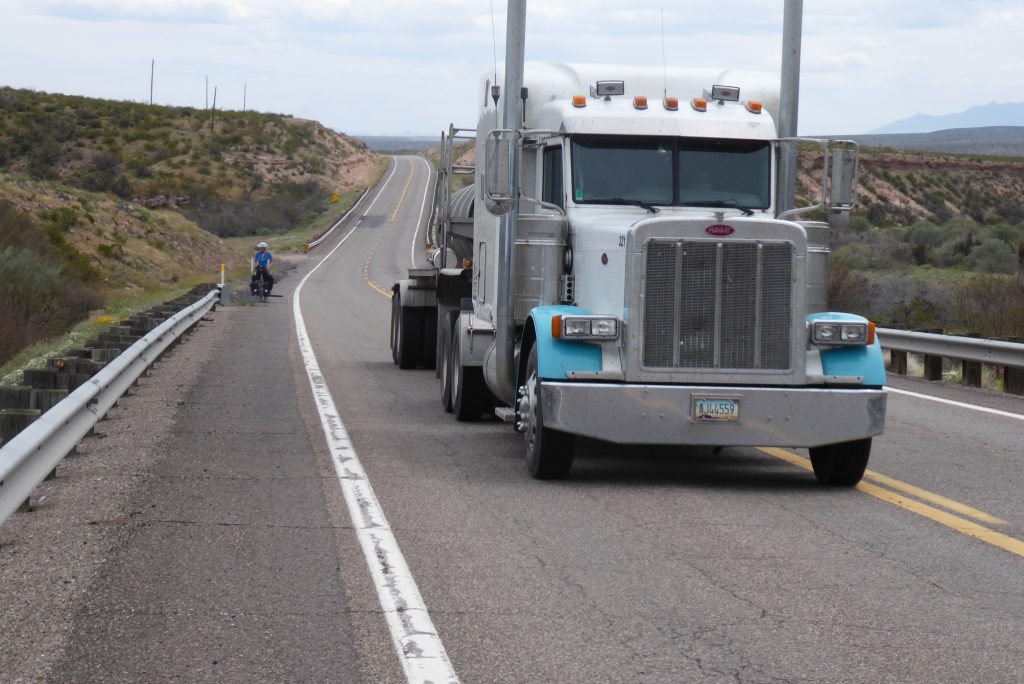
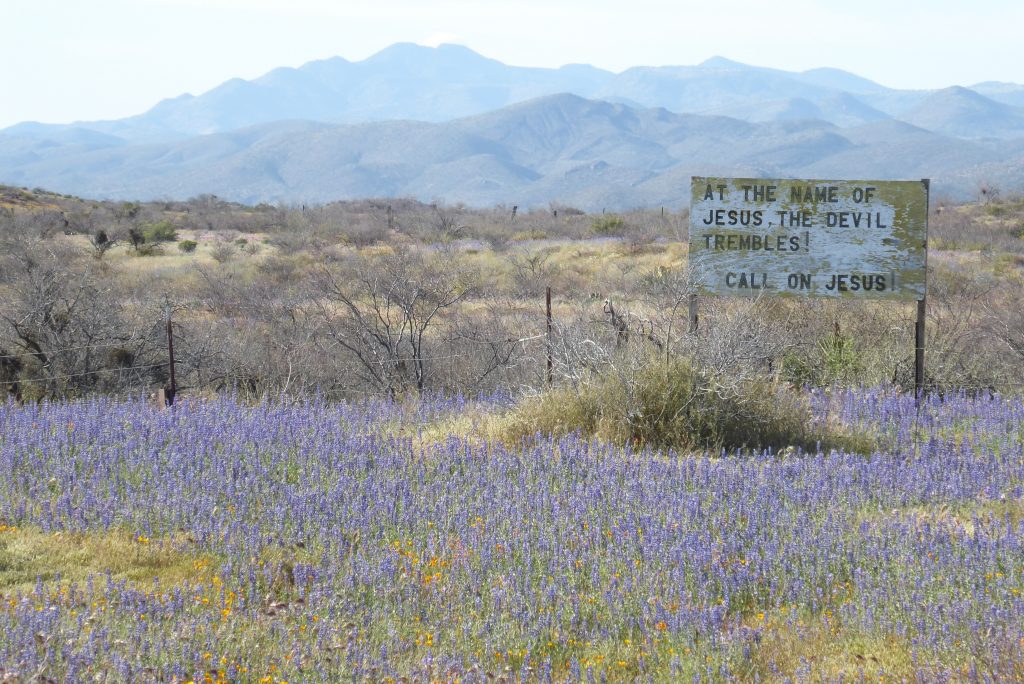
Terry’s perfectly timed chocolate bar delivered as we rode into Globe also helped a lot. You’ve seen that advert when someone is being a bit of a diva until they are calmed down with a Snickers bar? That was me exactly.
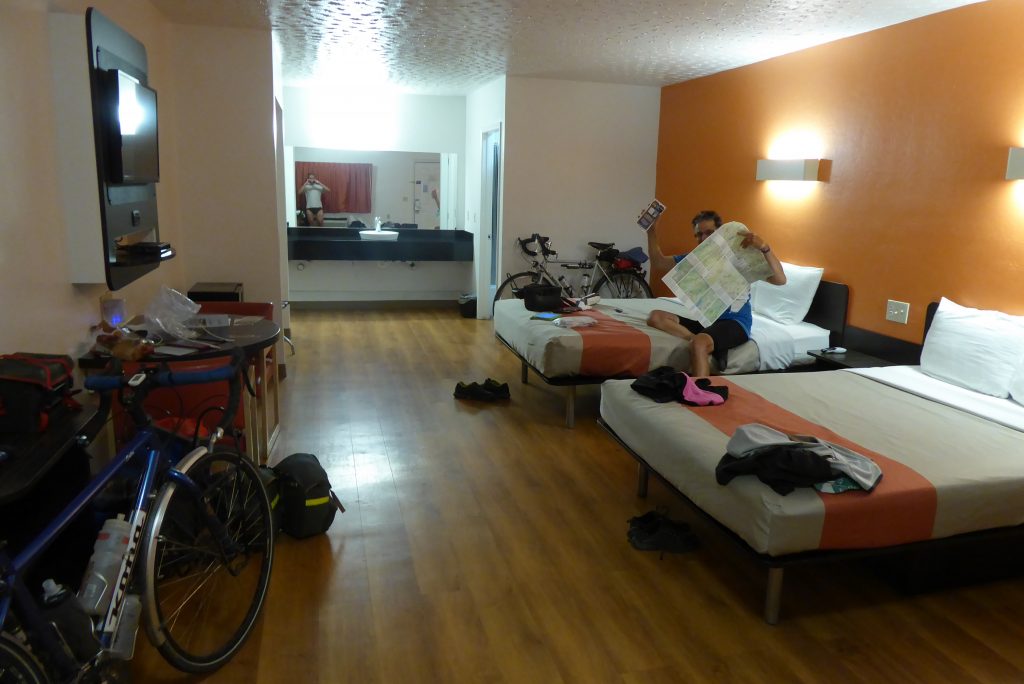
So, when the front desk clerk at the Motel 6 on Globe’s main drag quoted us $111 for a room we hardly quibbled it, although he did knock a little off the price. We feasted on Ramen noodles cooked up in the room, coffee from reception and later cokes and Dr Peppers from the McDonalds across the road, which I got for free as the manager was a British football fan and obviously enjoyed our chat about the current battles for the Premiership title!
It had been an exhausting day, but it was another 70 plus miles wiped off those remaining and another step closer to Phoenix.
Today’s miles: 77.62
Total miles since Anastasia State Park: 2,474.52
